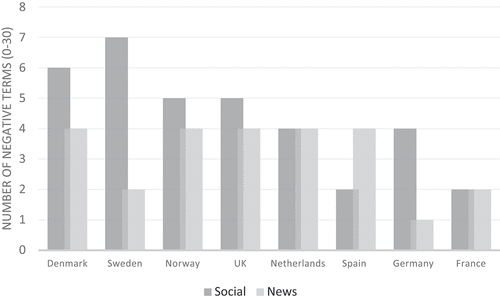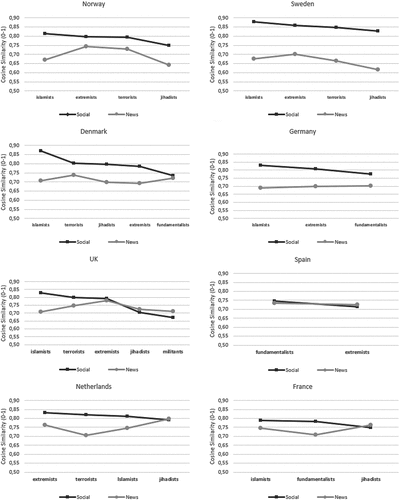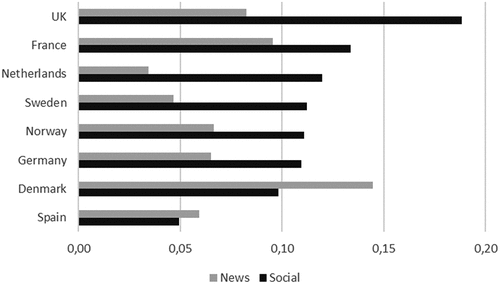Figures & data
Figure 1. Online hostility—number of negatively loaded terms.
Note. The figure shows the number of negatively loaded words among the top 30 words with the highest similarity score in social and news media content. See Appendix 2 for the complete list of most similar terms.

Figure 2. Cosine similarity scores.
Note. The figure shows cosine similarity scores for terms related to extremism/terrorism that were found in both media sources in the eight countries of interest. The maximum value along the y-axis is 1.

Figure 3. Attention gap between social and news media sites.
Note. The figure displays the relative term frequency of the terms ‘Muslim’, ‘Muslims’, and ‘Islam’ in social and news media across eight European countries. The relative frequency values in the figure were calculated by dividing the total number of occurrences of the terms by the total number of words in each corpus, then multiplying by a constant of 1000. This allows for a comparison of term usage across different corpus sizes. Taking Denmark as an example, the corpus size for social sources is 287,515,778 and the term frequencies 28,269, multiplied with a constant of 1000 the value is 0.0983. The corpus size for news sources in Denmark is 306,396,404 and the term frequencies 44,341, resulting in a value of 0.1447 (multiplied with 1000).

